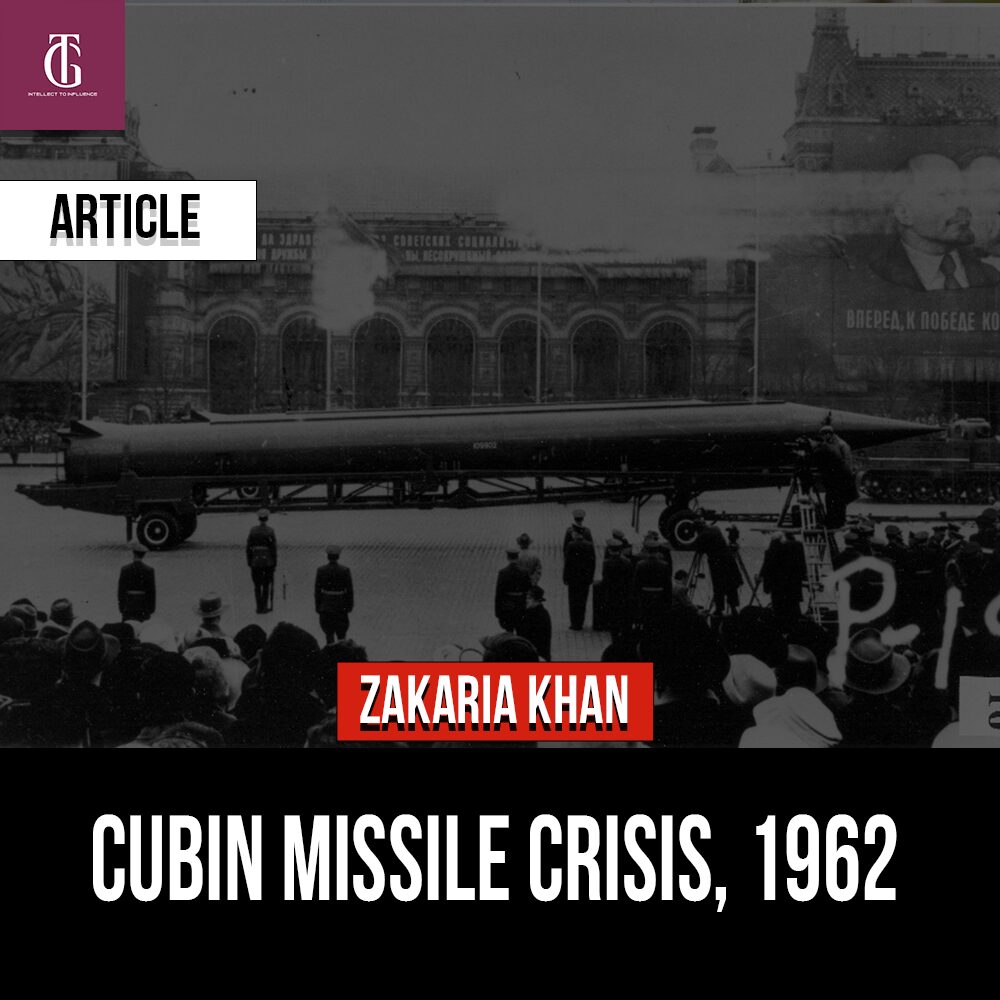
One of the most important moments in Cold War history was the Cuban Missile Crisis. An important global event known as the Cold War occurred from about 1945 to 1990. Tense relations during the Cold War and animosity between the USSR and US superpowers generally intensified at this time. The Cold War’s height of hostilities and the closest the world has ever been to a nuclear arms race was probably during the Cuban Missile Crisis.
The Cuban Missile Crisis, which lasted approximately thirteen consecutive days in October 1962 between the US and the former Soviet Union, was a significant Cold War conflict. This is recognized as the moment in the Cold War history when the United States and the Soviet Union came perilously near to engaging in a nuclear exchange.
The Soviet Union moved missiles into Cuba as a result of two things happening. First, nuclear missiles were stationed by the US in Turkey and Italy with the intention of striking Moscow and other vital areas within the former Soviet Union. Second, in May 1962, the United States made an unsuccessful attempt to topple the regime in Cuba. This is presently referred to as the “Bay of Pigs” invasion. In order to thwart any future invasion of Cuba and to make it plain that the Soviet Union was not pleased with US missiles fired at it from Turkey and Italy, Premier Nikita Khrushchev of the Soviet Union floated the notion of stationing nuclear weapons there.
Following a then-secret agreement in July 1962 between Premier Nikita Khrushchev and Cuban leader Fidel Castro, building quickly began on multiple missile sites in Cuba.
Observing these missile production locations, US intelligence on October 14, 1962, flown a US Air Force U-2 airplane over Cuba to capture photographic proof of Soviet-built medium- and intermediate-range nuclear missiles stationed there. The idea of an air and sea attack on Cuba was explored by the US government. Using the US Naval and the US Air Force to blockade Cuba was an additional possibility for preventing supplies from reaching the island nation. In order to prevent any more rockets reaching the Soviet Union from reaching Cuba, the United States chose to move forward with a navy and aircraft blockade. The US requested that Cuba and the USSR dismantle any missiles that were in place at the time and give the USSR back all missiles and the equipment that supported them.
Under President John F. Kennedy, the US administration anticipated a military conflict of some kind over the issue because it thought the USSR’s government would not accede to US demands. In a letter dated October 24, 1962, Premier Khrushchev informed President Kennedy that the US blockade of international air and maritime transportation comprised an act of war that would lead to a nuclear missile conflict between the US and the USSR. President Kennedy and Premier Khrushchev had started covert conversations, which were kept under wraps until the situation was resolved, without anybody knowing about it.
During the bilateral secret negotiations, Soviet vessels made an effort to evade the US embargo of Cuba. The orders to the United States Naval were to launch alert rounds at these ships and to shoot directly at them if they did not halt. On October 27, 1962, a Soviet missile squad based in Cuba shot down an American U-2 reconnaissance aircraft. All parties were experiencing extremely high levels of international tension at this moment, which may have led to an instant response from the US, further intensifying the situation. President Kennedy made the decision to carry on with the talks in an attempt to reach a peaceful resolution.
The Cuban Missile Crisis came to an end on October 28, 1962, once President Kennedy, Premier Khrushchev, and Mr. U Thant, the head of the UN General Assembly, came to an accord. Official declarations were made claiming that the UN would confirm the Soviet Union’s surrender of its missiles located in Cuba. The United States committed to never attacking Cuba and to decommissioning and removing its nuclear weapons from Turkey and Italy. On November 20, 1962, the US embargo of Cuba came to an end.
The need for an immediate, transparent, and direct line of communication among Washington and Moscow was highlighted by the contentious talks between the US and the USSR. The outcome was the establishment of the hotline, or direct phone line, between Washington and Moscow. Given that US Navy Station in Guantanamo, Cuba was permitted to stay open and that Cuba’s leader, Fidel Castro, did not participate in any discussions, Cuba felt deceived by the Soviet Union.
Although the US refrained from invading Cuba, Premier Khrushchev and the Soviet Union’s administration were humiliated by this arrangement. Two years later, Khrushchev lost his position as the leader of the Communist Party administration due to the perception that the Soviet Union was pulling out of a predicament that they had started. The US and China’s better ties were short-lived, as the Soviet Union took advantage of the “malaise” between the two countries in the latter part of the 1970s. They continued to persecute Eastern Europe under Brezhnev’s rule, and they entered Afghanistan in 1979 to establish a puppet regime. With a platform emphasizing the Soviet Union’s enduring power in the region of the Middle East and Eastern Europe, previous California governor Ronald Reagan campaigned for president in 1980 on a promise to break the détente.






